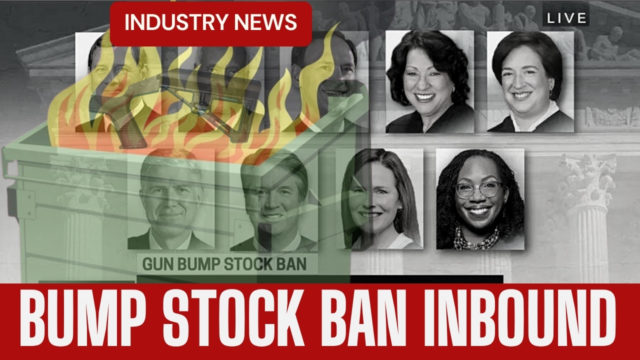Attached is the audio for the oral arguments before the US Supreme Court (SCOTUS) in the Garland v Cargill case. Aka The Bump Stock Case.
The audio goes on for 90 minutes. And for those not familiar, SCOTUS hearings are not like regular court most are familiar with. Each side gets to present their argument, then Justices at random can pepper the presenter with questions. This along with all the rulings and facts generated in lower courts; the Justices issue a ruling later.
But it’s the questions by the Justices that are the meat & potatoes of these cases. Why? Questions asked by Justices “can” sometimes be windows into their thinking. But not always.
Many times inquiries are for clarification of particular points. However, sometimes they can veer off into such things as hypotheticals, legislative intent, prior rulings, jurisdiction, down stream legal effects, or something direct like testing the strength of someone’s argument.
So with all of that out of the way, here is my two part analysis:
First, Justice Ketanji Jackson probably has the best, legal understanding of what a bump stock does. She has obviously gotten that understanding from the government’s written brief. This is important since it seems the others, including Trump’s appointments, are struggling to equate a bump stock with a trigger.
Second, bump stocks will be made illegal and the vote won’t be something close like 5-4. It could be 7-2. But it went so poorly for Cargill’s lawyer, he might have earned a 9-0 loss.
It’s bad, folks.
Sincerely,
Marky
www.John1911.com
“Shooting Guns & Having Fun”
- FN Hi-Power Inert Trainer - January 3, 2026
- Jack Basham Custom Colt 1911 - January 1, 2026
- POTD – Wilson eXperior Training Tailgate - December 29, 2025






